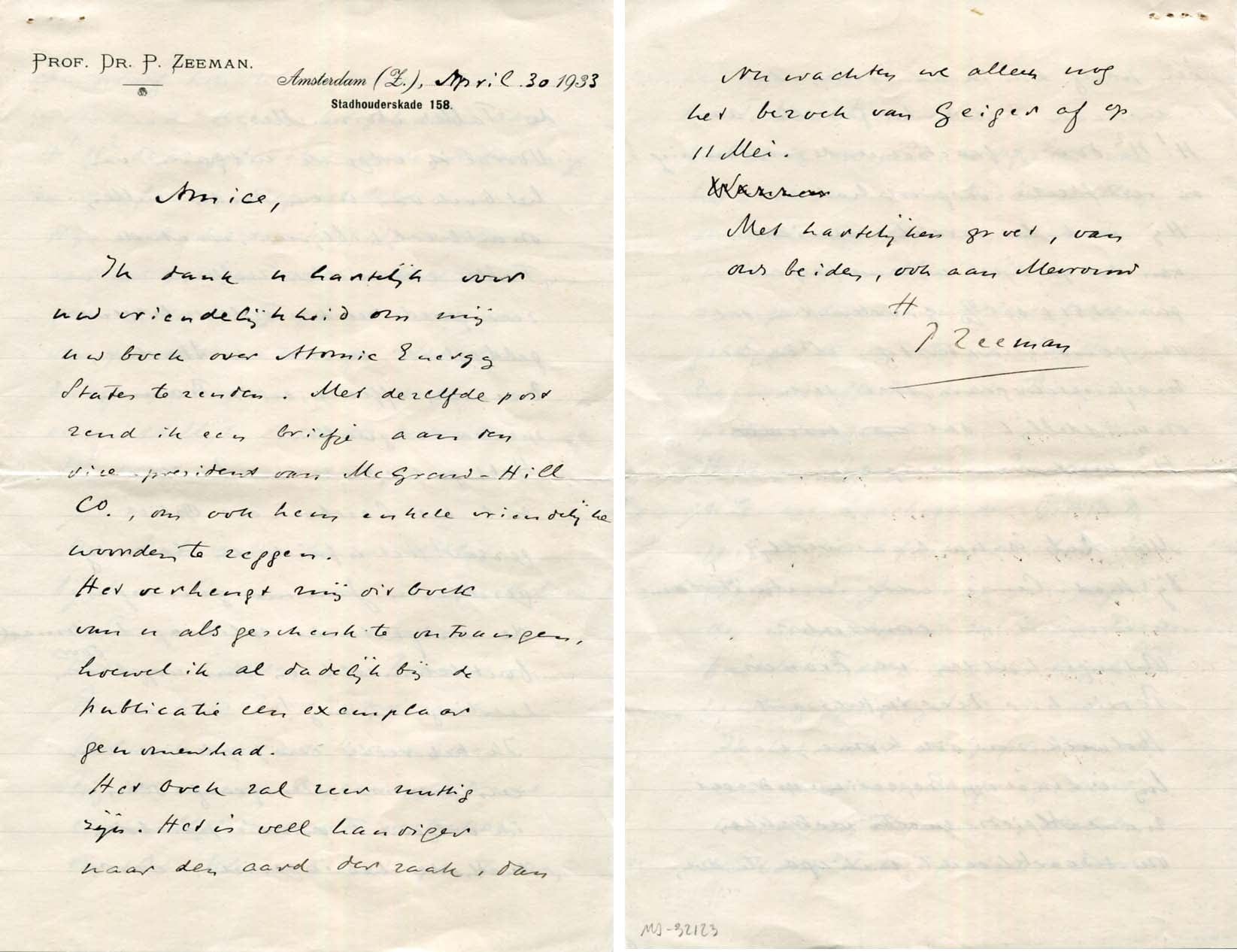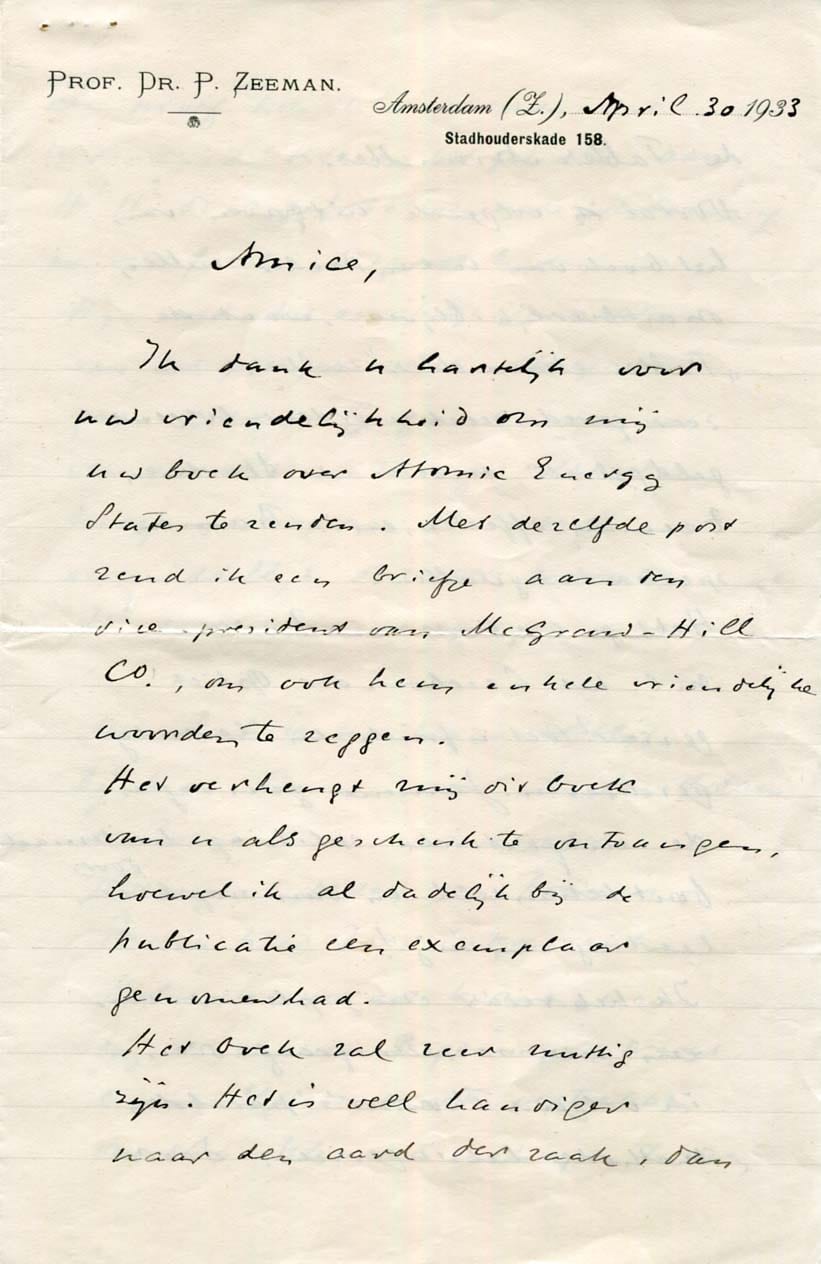Description
Autograph letter signed, 3 1/2 pages (on two conjoined sheets - both sides), 5,5 x 8,5 inch, `Prof. Dr. P. Zeeman` letterhead, Amsterdam, 30.04.1933, to Samuel A. Goudsmit - thanking the recipient for sending a copy of his book on Atomic Energy States, written and signed in dark ink "P. Zeeman", with a horizontal letter fold and pinholes to the upper left corner - in fine to very fine condition.
In parts (translated):
"[...] The book will be very useful. It is more useful on the issue than the Tables Annuelles. Subsequent editions of your and Bacher's book will prove to be indispensable [...] Did you see Zwikker's book, the Leerboek der Optiek? It is written in a refreshing and vivid way. It is too bad that the magnetic splitting has been treated completely wrong and even by a student of mine! I am already having some pleasure from a mass spectrograph that I installed following Thomson's parabola method. By experiment I can indeed prove that [...] the percentage H1 H2 had increased by fractionated evaporation and rectification. He found the specific gravity of the gas obtained through his method the specific gravity of the gas obtained through his method to be 1.51-+ 0.005% higher than that of ordinary hydrogen. With the mass spectrogram you see immediately that H2 has to be present. [...] Recently we had Francis Perrin to visit. Very interesting. Holweck was going to come too, but he had to leave for Algiers to do gravity measurements for a governmental commission. Now we are waiting for Geiger to visit us on the 11th of May [...]"
Further Information on the person
Profession:
(1865 - 1943) Dutch physicist who shared the 1902 Nobel Prize in Physics with Hendrik Lorentz for his discovery of the Zeeman effect
Year of Birth: 1865
Certificate of authenticity
All of our pieces are sold with a Certificate of Authenticity. If a piece turns out to be wrong or if you do not like an autograph, you will get your money back for a lifetime.
Payment & Security
Your payment information is processed securely. We do not store credit card details nor have access to your credit card information.




